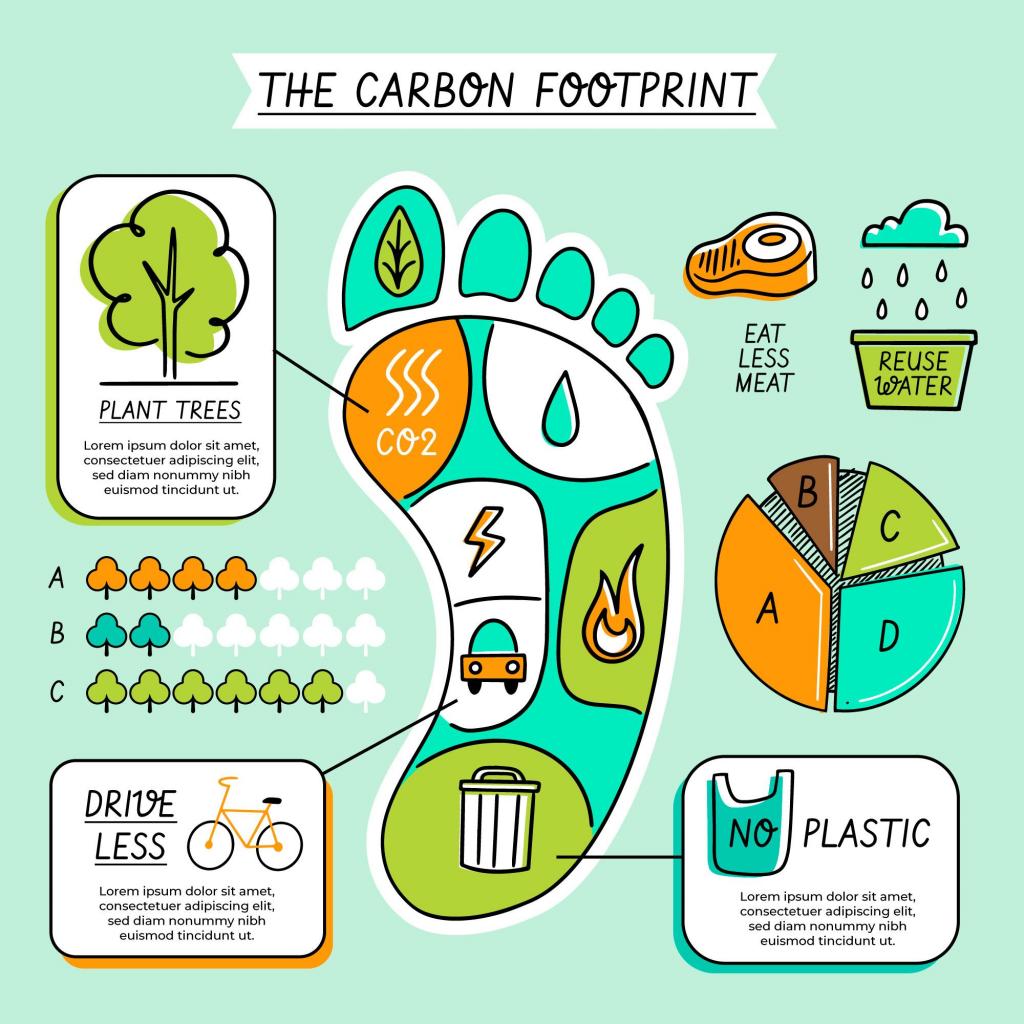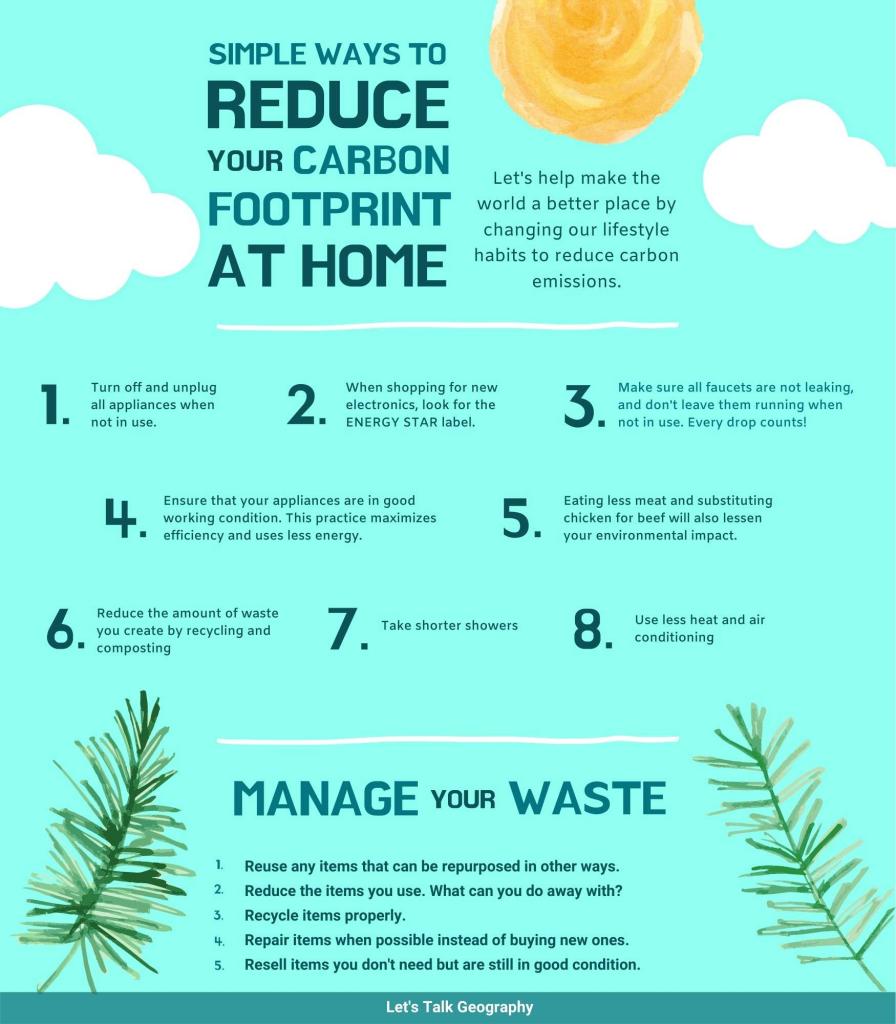Can you believe it’s already been 10 years since the release of Al Gore’s Academy Award-winning documentary, An Inconvenient Truth? Since then, climate change has only become more rampant and concerning, with 2017 being the hottest year on record.
In this post, we are going to discuss the 10 simple ways to reduce your carbon footprint. Let’s first understand what is meant by carbon footprint and why is it important to know your carbon footprint.
In today’s world, it is more important than ever to do our part in preserving the planet. Don’t lose hope – there are still many things we can do to reduce our carbon footprint and help make a difference, without making significant changes to our lifestyle.
⫸ What is Carbon Footprint?
Carbon footprint is the total amount of carbon dioxide (CO2) and other greenhouse gases emitted by something over a given period, usually expressed in equivalent tons of carbon dioxide (CO2e). Your carbon footprint is the sum of all emissions from every activity you engage in that involves burning fossil fuels, from driving your car to cooking your meals.

You can calculate your carbon footprint with our carbon calculator. The average American carbon footprint is 16 tons, one of the highest in the world. Globally, each person emits an average of 4.5 tons.
⫸ Why is it important to know your carbon footprint?
The goal of this project is to raise awareness about how your actions can have an impact on climate change by reducing the number of carbon emissions you produce. By taking small steps, everyone has a chance at making their voice heard—even if it’s just telling companies not to want business as usual anymore!
By taking individual action to lower our carbon emissions, we can help reduce overall consumer demand in these industries. Many individuals making small changes towards sustainable practices will send a powerful message that they do not stand for ‘business as usual’ and demand changes in current practices.
⫸ How to measure your carbon footprint?
The carbon footprint is the total amount of carbon dioxide (CO2) and methane (CH4) emissions of a person, event, product, or organization. footprints for individuals, organizations, and products. Greenhouse gases like carbon dioxide and methane trap heat in the atmosphere and cause global warming.
A carbon footprint can be measured by undertaking a GHG emission inventory or other calculation that estimates the number of greenhouse gases emitted. Many factors contribute to an individual’s or organization’s carbon footprint.
Burning fossil fuels for transportation, heating, and electricity is the main source of carbon dioxide emissions for most people and businesses. Other sources include deforestation, agricultural practices, and manufacturing processes.
You can calculate your carbon footprint with our online carbon footprint calculator. The carbon footprint calculation will estimate your carbon dioxide emissions from burning fossil fuels, as well as emissions from deforestation, land-use changes, and livestock.
⫸ What are some things you can do to reduce your carbon footprint?
Reduce your carbon footprint. There are many ways to reduce your carbon footprint. Every little bit helps! Here are 10 simple ways:
1. Drive less. Use carpool, public transportation, ride a bike, or walk when you can.
2. Save energy at home. Turn off lights and appliances when you’re not using them, and get energy-efficient appliances, and light bulbs when it’s time to replace old ones.
3. Save water. Turn the faucet off while brushing your teeth and water your plants during the cooler hours of the day.
4. Buy energy-efficient products. When shopping for new electronics, look for the ENERGY STAR label.
- Recycle and compost. Reduce the amount of waste you create by recycling and composting items like paper, glass, and food scraps.
6. Eat less meat. Meat production requires a lot of energy and water, so eating less meat can help reduce your carbon footprint.

7. Plant trees or other plants. Trees and plants absorb carbon dioxide from the atmosphere, so planting them can help offset your emissions.
8. Support renewable energy sources. purchase carbon offsets or invest in renewable energy sources like solar and wind power.
9. Use green power. Green power is electricity that is generated from renewable sources like solar, wind, or water.
10. Install a programmable thermostat
Other than these, you can also practice the following simple ways to reduce your carbon footprint.
- Unplug electronics when not in use
- Plant trees and gardens to create natural insulation and reduce energy consumption
- Turn off the water when brushing your teeth
- Eat locally grown produce whenever possible
- Use reusable shopping bags instead of disposable plastic bags
- Use less heat and air conditioning
- Take shorter showers
- Educate yourself and others about climate change and its effects on our planet.
- Advocate for policies that will help reduce greenhouse gas emissions globally.
⫸ Conclusion:
We hope you’ve found these tips helpful and will consider implementing at least a few of them. Every small step we take to reduce our carbon footprint makes a difference. What are some ways you plan to reduce your carbon footprint? Let us know in the comments below, and please share this post with your friends and family. Together, we can make a big impact on preserving our planet for future generations.






Itís difficult to find experienced people for this topic, but you seem like you know what youíre talking about! Thanks
Thank you for your kind words! I’m glad that you find the information and insights shared here valuable and trustworthy. It’s always my goal to provide well-researched and knowledgeable content on various topics, and it’s encouraging to know that this effort is resonating with readers like you.
If you have any specific questions or need further information on this or any other topic, please don’t hesitate to ask. I’m here to help and share knowledge to the best of my ability. Your curiosity and eagerness to learn more are what drive this platform. Thanks again for your appreciation, and I look forward to assisting you in any way I can! 🌟📚🙌
The very next time I read a blog, I hope that it wont disappoint me as much as this one. I mean, Yes, it was my choice to read through, however I genuinely believed you would have something interesting to talk about. All I hear is a bunch of crying about something you could fix if you werent too busy searching for attention.
Thank you for taking the time to share your thoughts and for giving the blog a read. I’m sorry to hear that the content didn’t meet your expectations this time around. Your feedback is important, and I appreciate your honesty. It’s crucial for me to understand the diverse perspectives and interests of our readers so that I can strive to provide more engaging and relevant content. If you have specific topics or ideas you’d like to see discussed in future posts, please feel free to suggest them. I’m always looking for ways to improve and make the blog more interesting and valuable for everyone. Thanks again for your comment, and I hope future posts will be more aligned with your interests. 🌟📚🙏